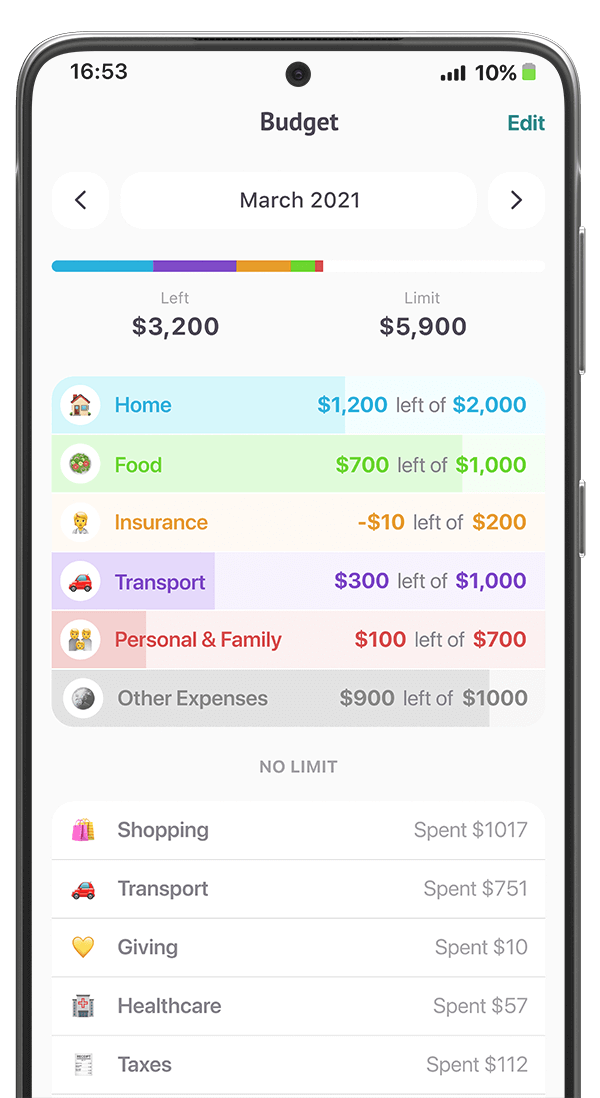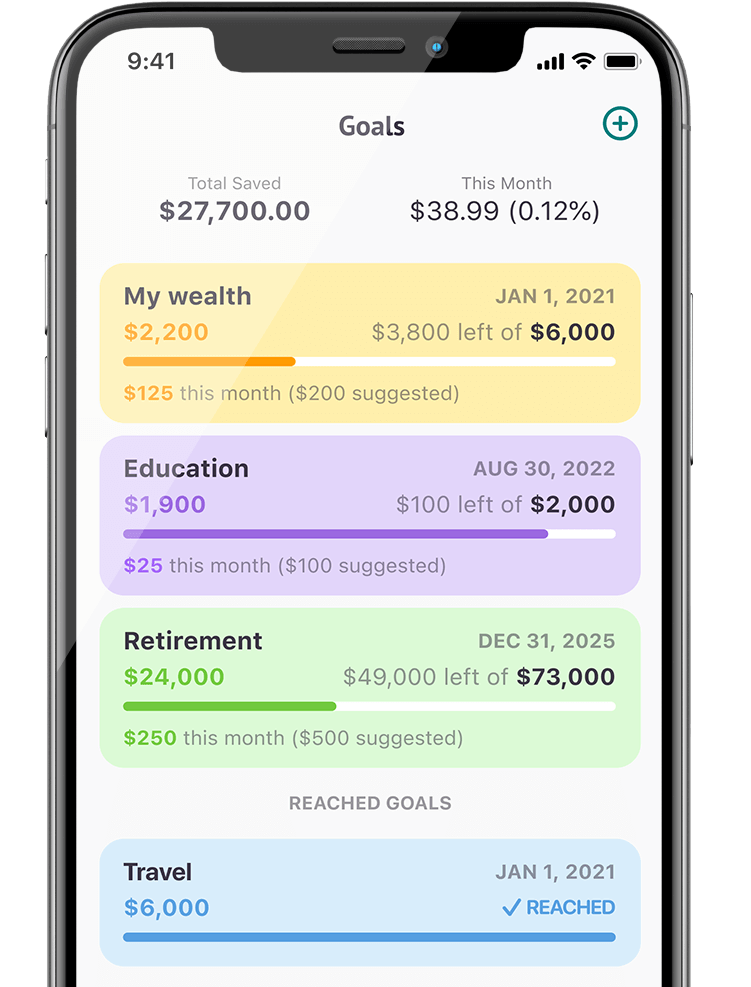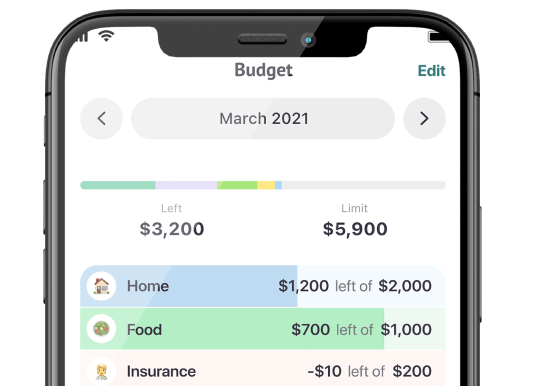Life is expensive. Education, marriage, children, career goals, personal accomplishments, retirement, and many of the other milestones on your journey cost money, so having a solid personal financial plan and savings strategy in place can significantly lower your stress levels. In general, the earlier you start planning, the more time you’ll have on your side, but each of your life’s financial stages can have a significant impact on your savings if you approach it correctly.
What are the financial stages of life?
There is no universal definition of life’s financial stages, but most people will experience roughly the same progression, going from low or no earnings as a teenager to a higher-earning middle age and hopefully stable retirement. Here are the six main stages we’ll examine and the major components of each:
- Teenage Years (13-17): Building money management skills like banking, credit, and savings
- Early Career/Education (18-30): Entering the workforce, building income, starting to save
- Mid-Career/Family (30s-50s): Growing career, investing, starting a family
- Late-Career/Pre-retirement (50s-60s): Focusing on investments, preparing for retirement
- Early retirement (60s-70s): Managing budget, accomplishing goals
- Late retirement (80s+): Managing finances, healthcare spending
Zooming out, these six specific stages fit into three larger financial life trends:
- Building financial capacity (stages 1 and 2)
- Growing wealth (stages 3 and 4)
- Distributing assets (stages 5 and 6)
While this pattern holds true on average, it’s worth noting that the age ranges are approximate and won’t necessarily hold true for everyone. According to research conducted by the Stanford Center on Longevity, every generation has similar goals for how old they want to be when they start a family or buy a home, but younger generations are reaching these milestones increasingly later than they would like to. Times and circumstances change, and it’s important to recognize that the actual age for each of the financial stages varies from person to person and is becoming less likely to coincide with your ideal age.
Stage 0: Teenage Years (13-17)

Priorities:
- Education and skill-building
- Financial literacy
- Simple jobs
Overview:
Thinking about long-term financial futures doesn’t come naturally to most teenagers, but there are foundational skills that everyone should learn as early as possible to make future financial stages smoother. These include:
- Banking
- Saving
- Budgeting
- Credit
- Investing
Teenagers don’t typically have significant incomes, but having enough to maintain a bank account, achieve savings goals, and even explore some basic investing will help familiarize them with vital skills before they’re tossed into the world of work with all its additional stresses. At this stage, it’s enough to open basic accounts and get a low-limit credit card to help build a credit history. Once they head off to university or join the workforce, they’ll be equipped with a good groundwork for building their financial future.
Stage 1: Early Career/Education (18-30)

Priorities:
- Education and skill-building
- Paying off debt and staying out of it
- Building credit
- Building an emergency fund
- Building savings
- Budgeting
- Obtaining suitable insurance policies
Overview:
Not everyone starts with the same resources. Savings, university education, skills, connections, location—there are dozens of factors that influence how your working life starts. Regardless of your starting point, though, Stage 1 is about focusing on the future. That means building skills and connections, keeping your future self in as little debt as possible, and, ideally, putting some money into savings. Use credit, but limit yourself to balances that you can pay off monthly; you may need a good credit score in the future if you want to buy something like a home or a car
Most people don’t start their careers with high incomes and lots of money to invest, but the magic of compound interest works best over long periods of time, and starting a savings habit early, even if it’s just a few percent at first, will pay off over the long run.
Outcome:
By the end of this stage, you should ideally have 3-6 months of income put away in emergency and/or savings accounts, a fairly reliable income stream, decent credit, a retirement account, and debt as low as possible (though university graduates owed an average of $29,200 on graduation in 2018, at interest rates ranging from 4.5% to 14%).
You may also be married, though the median age of first marriage is increasing steadily, reflecting the later onset of financial stability: the median age of first marriage was 29.8 for men and 28 for women in 2019, up from 28.2 and 26.1 in 2010, and marriage rates, in general, are declining.
According to Fidelity Investments, you should aim to save at least 1x your annual income by age 30, though paying down high-interest debt may take precedence during this stage. According to data from the U.S Bureau of Labor Statistics (BLS), the median income for 25-34 year-olds in 2018 was $45,552, which isn’t a hard-and-fast target to shoot for but gives you a good ballpark savings goal.
Stage 2: Mid-career and/or Family Building (30s/40s)

Priorities:
- Moving upwards in your career
- Saving for retirement
- Saving for short and medium-term goals
- Increasing income
- Possibly buying a house
- Budgeting
- Diversifying investments
- Staying out of debt
Overview:
Once you’ve gotten off to a good start with income, savings, and credit, you should start considering your longer-term career, family, and life goals, along with how much they’re likely to cost you. Your income and expenses are probably both growing at this point as you move into higher-earning jobs and pursue life goals. You should aim for saving at least 10-15% of your income (which is probably somewhere around the median of $54,444 that the BLS calculates for ages 35-44) and try to increase that percentage whenever you get a raise.
If you switch jobs, try to keep your retirement accounts consolidated and optimized. Save separately for your short and medium-term goals, like kids’ education or down payments on a house. Even a very simple budget will help you manage cash flow and find the money you can divert towards savings. Also, try to maintain good insurance plans to help insulate you against unexpected financial difficulties.
This is also the most likely time for a divorce to happen (as of 2015, the median first divorce age was 41.2 for men and 39.7 for women), but regardless of when it happens, you should take its impact on your finances seriously. Among other things, you’ll need to change accounts, recalculating retirement plans, rebuilding credit, and sharing any childcare expenses that may occur.
Outcome:
The “end” of this financial stage is difficult to define, but it’s generally marked by the fulfillment of mid-career goals (such as reaching a senior position) and/or more children starting to become more independent. If you can end with minimal debt and an increased savings rate, you’re on the right track. This is generally a transition into your highest-saving years.
Fidelity Investments’ rule of thumb is that you should save at least 3x your income by age 40.
Stage 3: Late Career/Pre-retirement (40s/50s)

Priorities:
- Increase retirement savings
- Plan out your investments and future income
- Establish retirement goals
- Pay off mortgages/debts
- Manage tax liabilities
- Financially assist family towards independence
- Explore estate management options
Overview:
If you’re planning to retire in your sixties, your forties and fifties are going to be an important time for catching up on and/or finalizing your retirement plans. Think about what kind of lifestyle you’ll want to have in retirement. Will you move to a cheaper area? Travel? Have a side job?
In your forties and fifties, you’re less likely to switch jobs and your income probably hasn’t changed much from your earlier levels ($54,028, according to BLS data on 45-54 year-olds). Your expenses are likely decreasing as you pay off debts and as any children you may have approach financial independence. Now is a good time to focus on increasing your savings more than your spending, especially if you’re behind on your retirement goals.
Starting at age 50, you can make catch-up contributions to most retirement accounts, so max these out if you can. Based on your future and current income, assess how much you should be contributing to pre-tax retirement accounts (like traditional 401(k)s) vs after-tax retirement accounts (like Roth IRAs). Maintaining a mix can limit your tax liabilities in retirement.
This may also be a good time to look into starting a business or building a skill set that you can carry through into retirement for extra income or even just to stay productive and active. Invest in your health as well: preventative care now could forestall serious issues as you age.
Outcome:
By the time you’re considering retiring from your primary occupation, you should have a fairly sizeable chunk of savings laid away in retirement accounts (Fidelity recommends 6x your annual income by age 50 and 7x by 55) and a good idea of how long it will last given your projected savings and future lifestyle.
Stage 5: Early Retirement (60s/70s)

Priorities:
- Maintain income sources
- Manage investments and savings
- Manage taxes
- Cut unnecessary expenditures
- Find ways to live more cheaply and sustainably
- Focus on long-term budgeting
- Maintain good health insurance and manage healthcare costs
- Make an estate management plan
Overview:
According to Gallup and the Federal Reserve, the average retirement age for most Americans ranges between 61 and 64, meaning you probably have another few decades to plan for. On the one hand, you want to avoid overspending so you don’t run out of savings too early, but some things you want to do may get more difficult later on, so may be worth the investment now.
Either way, be sure you have a solid long-term budget in place and are actively cutting spending on things you don’t need anymore, like extra cars or a larger house. You might even relocate to an area with a lower cost of living.
If you still have income beyond withdrawals from your retirement accounts, like Social Security, rental properties, or side jobs, be sure to manage it and keep it growing. Keep in mind how this may affect your tax status, though, especially if you’re making enough that you start having to pay taxes on your Social Security distributions.
Health insurance will also be a big priority at this point, as healthcare expenditures tend to peak at older ages. Staying as active and healthy as possible will probably pay off in the long run, both in terms of your finances and your quality of life.
Outcome:
Your early retirement phase will probably last around 10 or 15 years and is a great time to complete some of your long-term goals and establish healthy routines. You should have a solid financial plan that accounts for your savings, income, and taxes, and, perhaps more importantly, a “retirement identity” that keeps you satisfied and productive.
Fidelity recommends that you accumulate at least 8x your annual income in savings by age 60 and at least 10x by age 67, or whatever age you choose to retire at.
Stage 6: Late Retirement

Priorities:
- Continue meeting retirement goals
- Continue managing savings
- Look for ways to optimize your tax liabilities
- Plan for possible healthcare and assisted living costs
- Tie up any loose ends with your estate management
Overview:
If you’ve stuck to your plan throughout the last several stages, your late retirement should be relatively free of financial stresses. You should have a stable budget and a lifestyle in keeping with your priorities and financial situation.
Your biggest issues are likely to be healthcare expenses and decreased mobility, so you should be conscious of the fact that your spending on medical procedures and assistance may need to increase in the future.
You’ll need to update your estate management plan periodically and ensure that both it and your current withdrawals are tax-optimized. Seniors can be eligible for several different tax breaks, such as increased standard deductions, so be sure you’re taking full advantage of those. If your assets might be subject to an estate or inheritance tax, look into strategies for avoiding that, such as gifting or selling the assets.
Outcome:
Your later retirement years should hopefully be financially stable and not upset by too many large medical expenses. If you can manage to live life on your own terms, fulfill your goals, and plan for your assets to go where you want them to, you’ll be the definition of a successful retiree.
How to approach these financial stages
Everyone will have different timelines for these financial stages in their life, but building your long-term savings is the one thing that you should be trying to do no matter where you are financially. Even if you can just contribute a few dollars a month, maintaining a basic savings habit and increasing it whenever you can will almost certainly pay off in the long term.
Don’t put too much pressure on yourself to hit every financial milestone by midnight on some birthday, though: setbacks are normal, and allowing yourself some flexibility to live life the way you want is fine. Money is a means to an end, after all, and while you should be considering the happiness of “future you,” “present you” also needs nice things and good memories. The key is finding a balance between your current wants and future needs without being unfair to either one of your temporal personas, and those activities and timelines will look a bit different for everyone.











